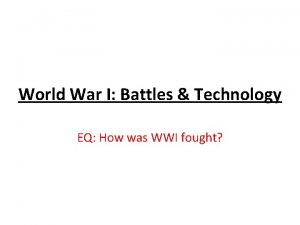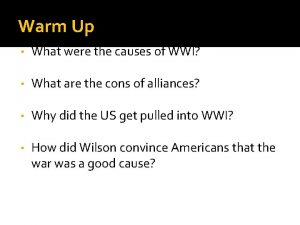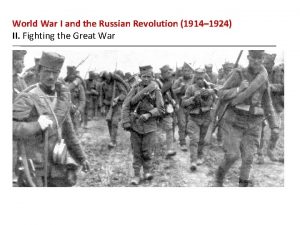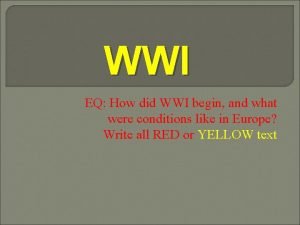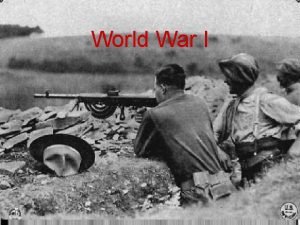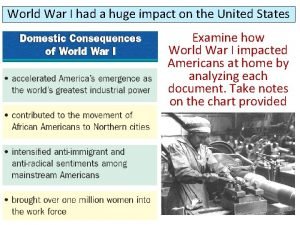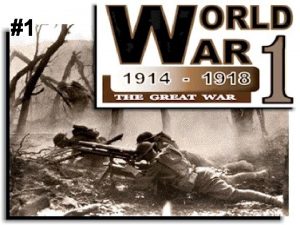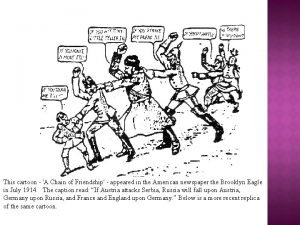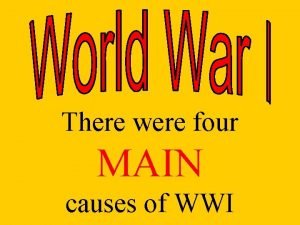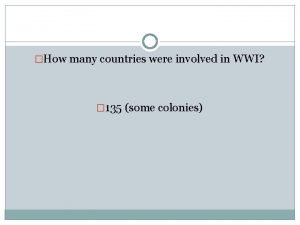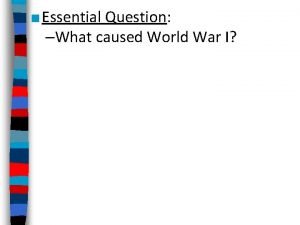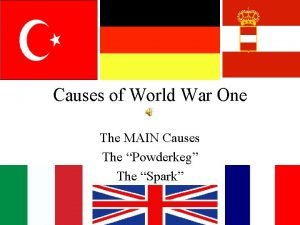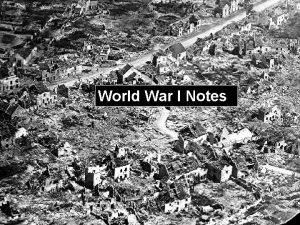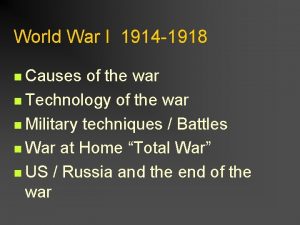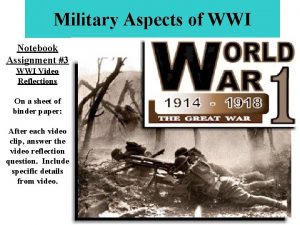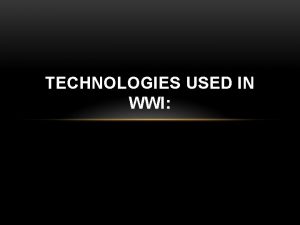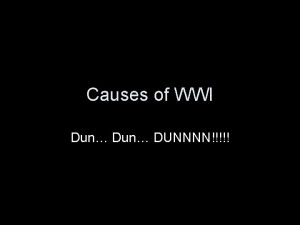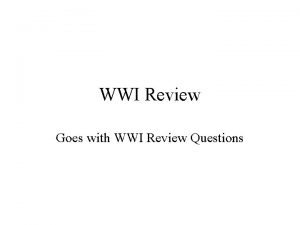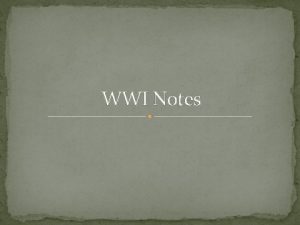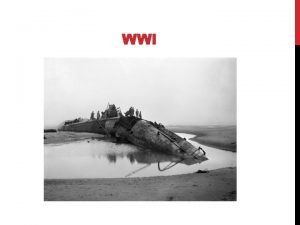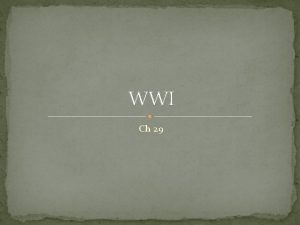WWI New Military Technology New Technologies Change the
























- Slides: 24

WWI: New Military Technology

New Technologies Change the Way War is Fought �WWI proved to be unlike previous wars in many ways For centuries, opposing forces had conducted combat face-to-face and hand-to-hand Military technology was limited and troops fired only at targets they could see clearly �New technology made WWI more impersonal and much deadlier

WWI Becomes a War of Attrition �Both sides thought WWI would end in under a week �Instead, WWI turned into a stalemate – both sides suffered heavy losses but neither could gain an advantage

Reason for Stalemate � New weapon technology such as… Bolt-Action Rifle Machine Gun Artillery Poisonous Gas Zeppelin Tanks Planes U-Boats � Trench Warfare New weapons meant soldiers could no longer charge each other across an open field Both sides dug trenches in the ground for protection

Overview of Trench Warfare �Trenches were elongated pits dug 6 -8 ft. into the earth, and stretching out over hundreds of miles �Trenches were only wide enough to allow two men to pass side-by -side




Trench Warfare �Duck Boards would line the bottom of the trench, to serve both as a place for the men to stand on the avoid enemy fire, and also to raise men above the mud, rats, blood,


Trench Warfare - Diagram

Overview of Trench Warfare �Barbed-wire was lined up in front of a trench to protect the men from attack.

Trench Warfare �Dugouts in the side of the trenches provided shelter for the men to live in, and protection from incoming artillery fire.

The entrance to a “dugout”

Trench Warfare – Dugout

Trench Warfare �Three interlocking trench lines would be used: a front line for attack and defense, a middle line of defense, and a rear line of



Trench Warfare �The distance between opposing trenches was called “noman’s land”. This distance


Trench Warfare �On command, soldiers from a trench would charge across “no-man’s” land attempt to overrun the opponents trench. �Once one of the sides overran an opposing trench, the defeated would either be captured, or they would retreat to another set of trenches miles away to renew the battle over a new “no-man’s” land.

A periscope would have been used to see the enemy, without putting a soldier in the direct line of fire.

Retrieving a dead soldier from “no-man’s land”

Trench Warfare �Weapons on the front included: Soldier’s would commonly use rifles, bayonets, spades, clubs, shotguns, helmets, and grenades Armies would use larger items such as machine guns, mortars, artillery, gas, barbed-wire, aircraft, and mines
 New technology in wwi
New technology in wwi World war i combatants
World war i combatants New military technology
New military technology Military university of technology
Military university of technology E commerce architecture and technologies in web technology
E commerce architecture and technologies in web technology Michael plasmeier
Michael plasmeier Wwi webquest
Wwi webquest Italian gains in ww1
Italian gains in ww1 Sides of wwi
Sides of wwi Ww1 main causes
Ww1 main causes Impact of wwi
Impact of wwi What were the 4 main causes of wwi
What were the 4 main causes of wwi Friendship cartoon
Friendship cartoon What were the m.a.i.n. causes of wwi
What were the m.a.i.n. causes of wwi Imperialism 1900
Imperialism 1900 How many countries were involved in wwi
How many countries were involved in wwi Militarism
Militarism Main wwi
Main wwi Wwi background
Wwi background Mania in ww1
Mania in ww1 Conclusion of world war 1
Conclusion of world war 1 World war 1 jeopardy questions
World war 1 jeopardy questions Weapons of wwi
Weapons of wwi Nationalism wwi
Nationalism wwi Wwi
Wwi
